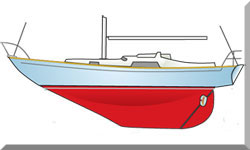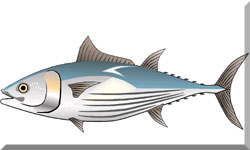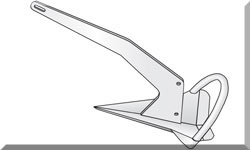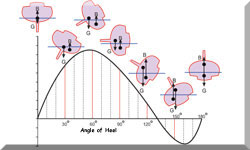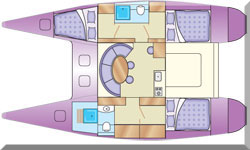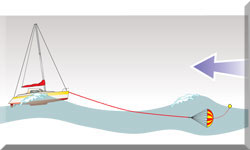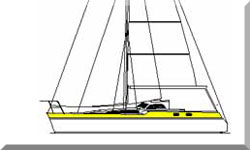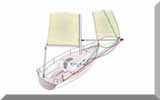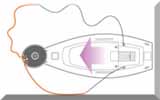- Home
- Ericson Sailboats
Ericson Sailboats: Enduring Craftsmanship & Performance for the Recreational Sailor
For decades, the name Ericson has resonated with recreational sailors seeking a harmonious blend of solid construction, thoughtful design, and satisfying performance.
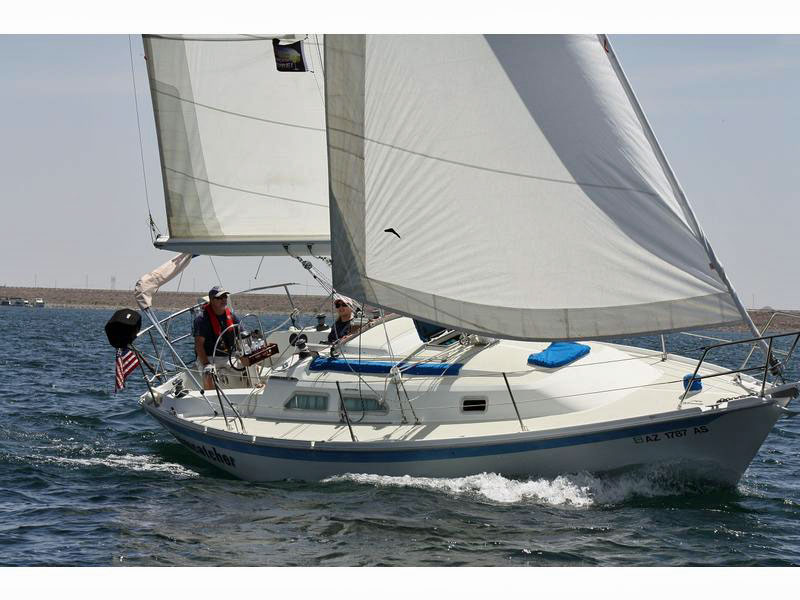 Ericson 28.5
Ericson 28.5While the company may no longer be actively building new yachts, its legacy lives on in the robust and often cherished Ericson sailboats that continue to ply waters around the globe.
A Pioneering Spirit: Ericson's Journey Through the Decades
Ericson Yachts came into being in California around 1963, founded by Handy and Jenkins. Their initial aim was to capitalize on fiberglass, a material just beginning to show its promise in yacht building. Early on, they even acquired molds from other builders, but it wasn't long before their own distinct design philosophy started to emerge. A pivotal moment arrived in 1965 when Mark Pitman and Del Walton stepped in, acquiring the company after a Chapter 11 filing. This acquisition ignited a fruitful collaboration with Bruce King, a renowned naval architect whose designs would soon become synonymous with the Ericson brand. Despite various shifts in ownership over the years, Ericson never wavered in its commitment to quality. The company ultimately ceased operations and liquidated its assets in 1990. Even so, the enduring quality of these used Ericson sailboats means they remain a popular choice in the market today.
The Bruce King Touch: A Legacy of Thoughtful Design
At the very heart of Ericson's design philosophy sits Bruce King, the naval architect who penned so many of their most iconic models. King's designs for Ericson sailboats married performance with aesthetic appeal, aiming to create yachts that were both capable on the water and comfortable below. While Ericson primarily partnered with King, their earlier "eclectic line" also featured designs from other talented individuals like Carl Alberg and W.B. Crealock.
You'll often spot signature design elements in Ericson sailboats, like their well-balanced hull forms, which contribute to a comfortable motion even in choppy seas. Many models sport fin keels with spade rudders, a configuration offering a good blend of maneuverability and upwind prowess. The focus was consistently on performance cruising, delivering boats that could hold their own in a casual club race yet still offer the amenities for enjoyable coastal trips or even offshore passages. While Ericson wasn't necessarily known for radical technological breakthroughs, they effectively embraced fiberglass construction, prioritizing sound engineering and quality lamination techniques to create truly durable hulls, contributing to the renowned Ericson build quality.
Built to Last: Construction and Materials
Most Ericson yachts were built using GRP (fiberglass) for both hulls and decks. Their reputation for solid build quality and durability is a direct result of the construction methods they employed. While specific techniques might have evolved over time, a commitment to robust hand lay-up was standard practice. Owners frequently sing the praises of Ericson's fiberglass work, noting that many older models still boast impressive structural integrity.
However, like many boats from that era, some Ericson sailboats, particularly those with flush decks, used balsa coring in the decks. This provides excellent stiffness and insulation, but it can be vulnerable to water intrusion and subsequent delamination if deck hardware isn't properly bedded or maintained over the years. This is a crucial point for potential buyers to meticulously inspect on the used market. Below deck, interiors often showcase warm, traditional joinery, frequently in mahogany, creating a classic and inviting atmosphere.
A Fleet for Every Sailor: Notable Ericson Models
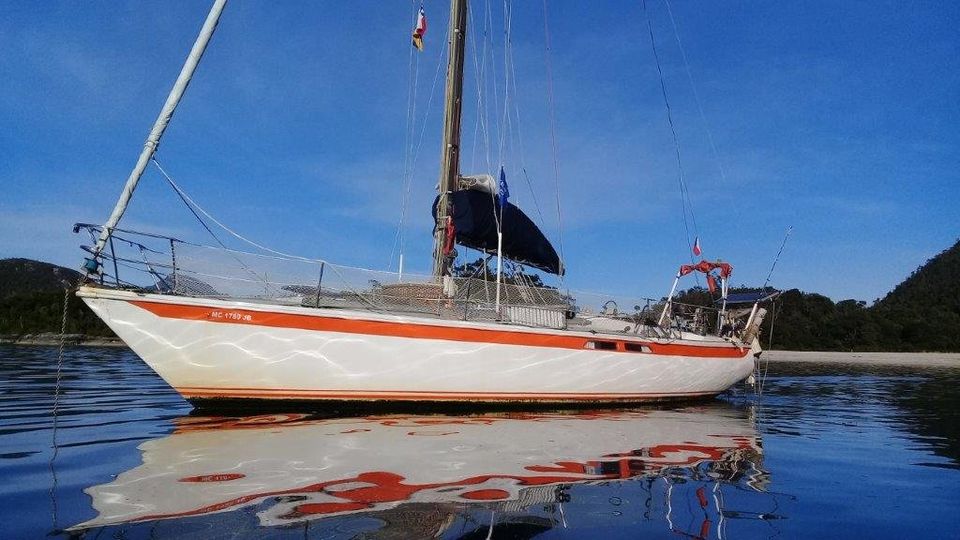 Ericson 39
Ericson 39From their initial "eclectic" offerings to their more refined later models, Ericson produced a remarkably wide array of sailboats. Some of their foundational designs included the E-30, E-32 Scorpion, and E-41. As time went on, designs evolved, generally shifting towards more modern fin-keel configurations and often gaining beam to provide more interior volume.
Two models that absolutely deserve a special shout-out are the Ericson 28.5 and the Ericson 39.
- The Ericson 28.5 (sometimes affectionately called the Ericson 28+) is a popular model known for being a solid, easily single-handed, fractional-rigged sloop. Introduced in 1980 and built until 1984, roughly 90 of these boats were produced. With her fin keel and spade rudder, she delivers good performance for her size and is often lauded for her stability in various conditions. Owners frequently highlight the surprisingly spacious interior for a boat of her length, making her a comfortable weekend cruiser. Common considerations for anyone looking at an Ericson 28.5 include checking the engine, rigging, and addressing typical age-related wear on hoses and plumbing. The fractional rig certainly makes for easier sail handling, and many owners find her a "sweetheart of a boat to single hand."
- The Ericson 39, first launched in 1970, was conceived by Bruce King as a serious racer-cruiser for its time. Around 130 of these boats were built. Most Ericson 39s feature a nearly flush deck, a design choice that's incredibly practical for sailing but can be a bit polarizing aesthetically. That flush deck, though, allows for a very efficient layout for sail handling. For those craving more traditional aesthetics and increased headroom below, the 39B model was introduced in 1975, although only 19 of those saw the light of day. The Ericson 39 boasts a deep forefoot and fullish aft sections, contributing to a comfortable motion even in rough seas. With a ballast-to-displacement ratio approaching 50%, she's considered a stiff and powerful boat, capable of handling a proper blow. While perhaps not a modern racing machine, her robust build and comfortable interior make her a respected choice for Ericson offshore capability and extended cruising. Owners note that the 39 can actually be quite easy to single-hand once you've worked out its "1970s oddities."
Performance & Onboard Experience
Ericson sailboats are generally thought of as good performers, especially considering their cruising-oriented nature. They're often described as stable, stiff, and easily handled. While they might not be the fastest boats in a whisper of a breeze, they typically stand up well to a strong wind and can power through waves with comfort. Their designs aimed for weatherliness, meaning they could make good progress to windward. Many Ericson owners appreciate the predictable and comfortable motion of their boats, making them well-suited for longer passages. The heavier displacement of many models, like the Ericson 39, allows them to carry provisions and gear without significantly impacting their waterline or performance.
Below deck, Ericson sailboat interiors usually exude a classic, warm aesthetic, often featuring well-executed mahogany joinery. The interior layout philosophy generally prioritizes comfort and liveability for cruising. While earlier models might feature more traditional, segmented layouts, later designs sometimes incorporate more open plans. Common features include comfortable V-berths, practical galleys, and decent-sized heads. Many owners find Ericson interiors to be quite comfortable and practical for extended periods aboard.
What to Look For: A Buying Guide for Ericson Sailboats
When you're thinking about buying an Ericson sailboat, their reputation for solid construction is a huge plus. But, just like with any boat of their age, certain areas deserve a thorough inspection. This can help with Ericson sailboat problems you might encounter.
Key areas to scrutinize include:
- Deck Delamination: Especially on models with balsa-cored decks, hunt for any soft spots, particularly around deck hardware, stanchions, and mast steps. This is one of the more common Ericson sailboat common issues.
- Keel Bolts (if applicable): While many Ericsons had encapsulated keels, some featured bolted-on keels, so check these carefully for signs of corrosion or movement.
- Bulkheads: Make sure bulkheads are securely tabbed to the hull.
- Original Components: Many Ericson yachts will still have their original engines, tanks, and electrical systems. While some of these components are known for their durability (think some Universal diesels), they'll likely need attention or upgrading due to their age.
- Rigging: Standing and running rigging will almost certainly be due for replacement if it hasn't already been done.
- Water Tanks: Some models, like the Ericson 39, had water tanks in locations that owners sometimes modified or found a bit problematic.
Despite these common age-related considerations, the underlying quality of Ericson's build makes them fantastic candidates for a refit and many more years of enjoyment.
An Enduring Legacy in the Sailing Community
Ericson Yachts carved out a robust reputation in the sailing community for producing well-built, capable, and comfortable fiberglass sailboats. They aimed squarely at recreational sailors who valued a balance of performance and cruising amenity, often appealing to those looking for a step up in quality from more basic production boats.
In the used market, Ericson sailboats generally hold their resale value quite well—a testament to their durable construction and timeless designs. There's a strong and active Ericson owner's association, especially through online forums like EricsonYachts.org, where owners enthusiastically share knowledge, resources, and their love for these boats. This vibrant community is an invaluable asset for anyone considering an Ericson, offering a treasure trove of practical advice and camaraderie.
The enduring legacy of Ericson sailboats lies in their significant contribution to the development of quality fiberglass sailboats. They proved that production boats could be both well-engineered and aesthetically pleasing, offering satisfying sailing characteristics without sacrificing comfort. For many, an Ericson represents a pragmatic choice for a reliable, enjoyable, and capable cruising platform that continues to deliver memorable experiences on the water.
Resources & References
Recent Articles
-
Passoa 47 Sailboat Review: Comprehensive Specs & Performance Analysis
Jan 04, 26 04:57 AM
Discover the Passoa 47, a legendary aluminium blue water cruiser by Garcia. Explore technical specifications, design ratios, and why its lifting keel is a game-changer for offshore sailors. -
Sailboat Wheel Steering Maintenance & Inspection Checklist
Dec 30, 25 02:32 PM
Keep your vessel’s helm responsive and reliable with our expert maintenance checklist. Master cable tensioning and system inspections to avoid mid-passage failures. -
Modern Boat Electronics and the Latest Marine Instruments
Dec 20, 25 05:27 PM
Should sailboat instruments be linked to the latest boat electronics as a fully integrated system, or is it best to leave them as independent units?


